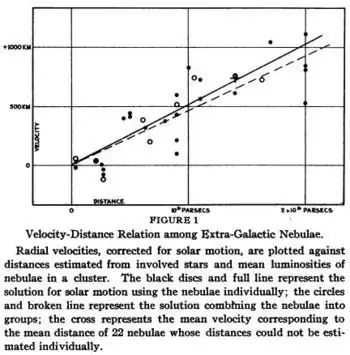I know the derivation of Hubble time goes something like this (I am an a-level student so this may not be the actual derivation): Two galaxy that is moving away from each other at speed v are now D distance apart assuming the time when they where together is t=0 i.e. at the Big Bang the time since the Big Bang is given by $$T= \frac{D}{V}$$ $$V=\frac{D}{T}$$ Hubble's law is given by $$V=HD$$ therefore subbing the first expression into the latter gives $$\frac{1}{T}=H$$ and therefore $$T=\frac{1}{H}$$ The thing I do not understand is if we are assuming the rate of expansion is constant (as is required for this) why does that mean we can use $$t=\frac{d}{v}$$ Because as the galaxies get further apart together the space between them gets more and more hence they will move away from each other faster the further the are apart. This equation needs v to be constant which is not the case. Please can someone explain?
In the linked qestion they use the formula t=d/v just saying it is a linear extrapolation. This does not help me with my qestion as i can still not understand why this can be used as it assumes v is constant (i think) which it would not be. I am looking for this to be explained in more detail then the linked question.
